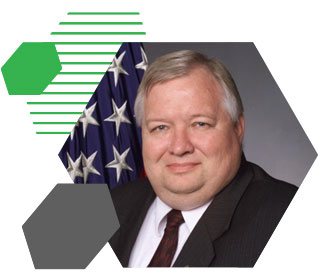
DECEMBER 8, 2020 @ 1:00PM EST
Look to the Future
A virtual gathering of obsolescence thought leaders and industry experts who know the best is yet to come
Sustainment Symposium 2020 hosted by GDCA
Electronic component obsolescence is an eventuality that has thrown the long-term life cycle availability of circuit card assemblies (CCAs) into chaos. These assemblies control nearly every major defense system.
The realities of Moore’s law have pushed obsolescence and supply chain assurance issues to the forefront across all industries – routinely throwing DoD programs into disarray while they scramble for Diminishing Manufacturing Sources and Material Shortages (DMSMS) resolutions that rarely deliver true life cycle sustainment.
Understandably, teams tasked with solving DMSMS issues have sought to develop tools and resources that are focused on predicting and managing obsolescence events and their impact on readiness.
However, for programs with life cycles that stretch into decades, this approach quickly creates gridlock for teams as DMSMS issues naturally pile up – often beginning during acquisition phase. Even after decades of effort, teams continue struggling to manage obsolescence and have yet to achieve true life cycle sustainment solutions.
But what happens when we shift our focus from obsolescence management to our true goal: life cycle sustainment?
In this symposium, we pull together leading minds across the DoD supply chain highlighting their relevant sustainment experiences and exploring what could happen when we begin to focus on sustainment as the objective. We will explore the following questions:
- What requirements are necessary in a sustainment solution?
- What are the challenges preventing us from satisfying these requirements?
- What ways could we overcome those challenges?
This December, GDCA will be hosting a special virtual symposium focused on the journey from obsolescence management to legacy sustainment. Join us!
Capacity is limited. Registration is open.

AGENDA
1:00 – 1:30 Symposium Welcome & Introductions
1:30 – 3:20 Presentations
- Sustainment is the Lowest Cost Path - Ethan Plotkin, Chief Executive Officer GDCA
- Sustainment is Science (and a Culture) - Dr. Peter Sandborn, Director - Maryland Technology Enterprise Institute (Mtech)/Professor - Department of Mechanical Engineering University of Maryland
- Sustainment is Rapid Refresh - Dan Christenson, Director of Engineering USAF 748th
- Sustainment is Metrics for Programs - Robin Brown, DMSMS & Parts Management Program Manager for the Office of the Secretary of Defense
- Sustainment is Planning (And Evolving) - Timothy J. Zitkevitz, COTS HW/SW and Material Obsolescence Lead Obsolescence Management & Modeling Group Lockheed Martin RMS Global Sustainment
3:20 – 3:30 Break
3:30 – 4:45 Innovating Sustainment - Panel
4:45 – 5:30 Extended Day - Networking Rooms
Let’s talk about…
- DMSMS - DMSMS and government related sustainment issues that plague us all
- Supply Chain Management - Supply chain aspects of lifecycle sustainment
- Parts Management - Designing for sustainment...and beyond
- Sustainment Policy - Popular resources – especially the new DODI 4245.15 and SD-22
- DMSMS Training – Available landscape of training materials and approaches
- The Host’s Lounge -Let’s talk about…. Whatever (open session)
FEATURED SPEAKERS

ROBIN BROWN,
DMSMS and Parts Management Program Manager for the Office of the Secretary of Defense

DAN W. CHRISTENSON,
Director of Engineering, USAF, 748 SCMG

ETHAN PLOTKIN,
CEO at GDCA

PETER SANDBORN,
Professor in the CALCE Electronic Products and Systems Center and the Director of the Maryland Technology Enterprise Institute at the University of Maryland

TIMOTHY ZITKEVITZ,
Lead Obsolescence Systems Engineer at Lockheed Martin

DECEMBER 8, 2020, @ 1:00PM EST
ABOUT GDCA
GDCA is a recognized leader in legacy embedded sustainment solutions, pioneering some of the earliest proactive obsolescence management tools, such as pre-stocking agreements and bill of materials (BOM) health modeling, and incorporating counterfeit avoidance protocols. GDCA creates innovative approaches to ensure legacy and tackle sustainment for critical systems.
Over its thirty years in business, GDCA has worked with government programs, prime contractors, and supply chain OEMs to optimize the business practices needed to create second sources of supply (SSOS) for obsolete commercial, off-the-shelf (COTS), and custom circuit card assemblies (CCAs).
We firmly believe that collaboration and transparency help us bring together the industry’s best thinkers who are a critical part of tailoring the necessary solutions to meet the challenges of obsolescence.
GDCA is driven by the commitment to make embedded obsolescence a thing of the past. For more information, please contact info@gdca.com.
